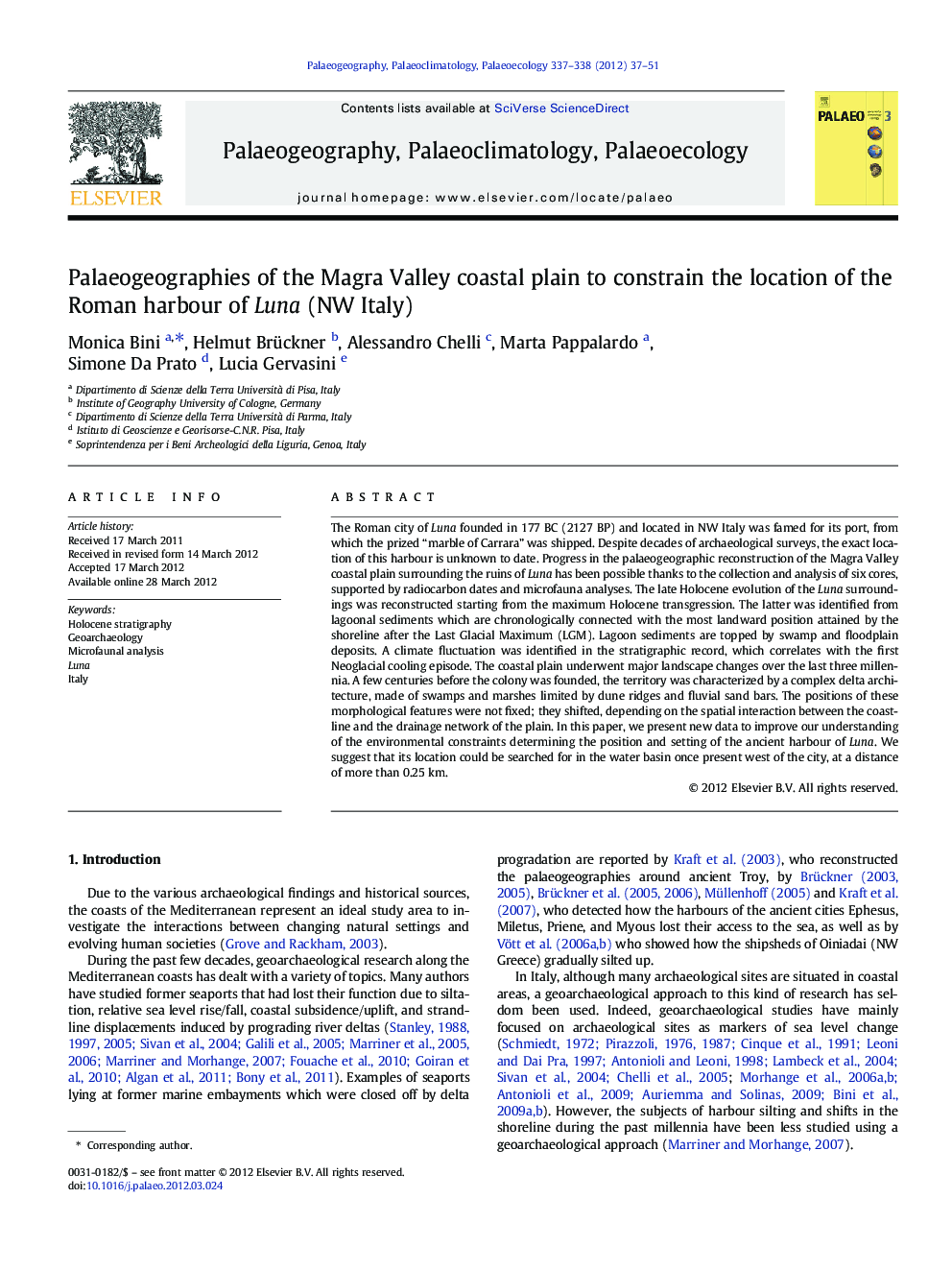| کد مقاله | کد نشریه | سال انتشار | مقاله انگلیسی | نسخه تمام متن |
|---|---|---|---|---|
| 4466908 | 1622231 | 2012 | 15 صفحه PDF | دانلود رایگان |

The Roman city of Luna founded in 177 BC (2127 BP) and located in NW Italy was famed for its port, from which the prized “marble of Carrara” was shipped. Despite decades of archaeological surveys, the exact location of this harbour is unknown to date. Progress in the palaeogeographic reconstruction of the Magra Valley coastal plain surrounding the ruins of Luna has been possible thanks to the collection and analysis of six cores, supported by radiocarbon dates and microfauna analyses. The late Holocene evolution of the Luna surroundings was reconstructed starting from the maximum Holocene transgression. The latter was identified from lagoonal sediments which are chronologically connected with the most landward position attained by the shoreline after the Last Glacial Maximum (LGM). Lagoon sediments are topped by swamp and floodplain deposits. A climate fluctuation was identified in the stratigraphic record, which correlates with the first Neoglacial cooling episode. The coastal plain underwent major landscape changes over the last three millennia. A few centuries before the colony was founded, the territory was characterized by a complex delta architecture, made of swamps and marshes limited by dune ridges and fluvial sand bars. The positions of these morphological features were not fixed; they shifted, depending on the spatial interaction between the coastline and the drainage network of the plain. In this paper, we present new data to improve our understanding of the environmental constraints determining the position and setting of the ancient harbour of Luna. We suggest that its location could be searched for in the water basin once present west of the city, at a distance of more than 0.25 km.
► Reconstruction of the Luna coastal plain since the maximum Holocene transgression.
► We show new data based on cores analyses, microfauna determination and 14C dating.
► A new palaeogeographic scenario is presented.
► We suggest that the main Roman harbour of Luna should be buried in the western lagoon.
Journal: Palaeogeography, Palaeoclimatology, Palaeoecology - Volumes 337–338, 15 June 2012, Pages 37–51